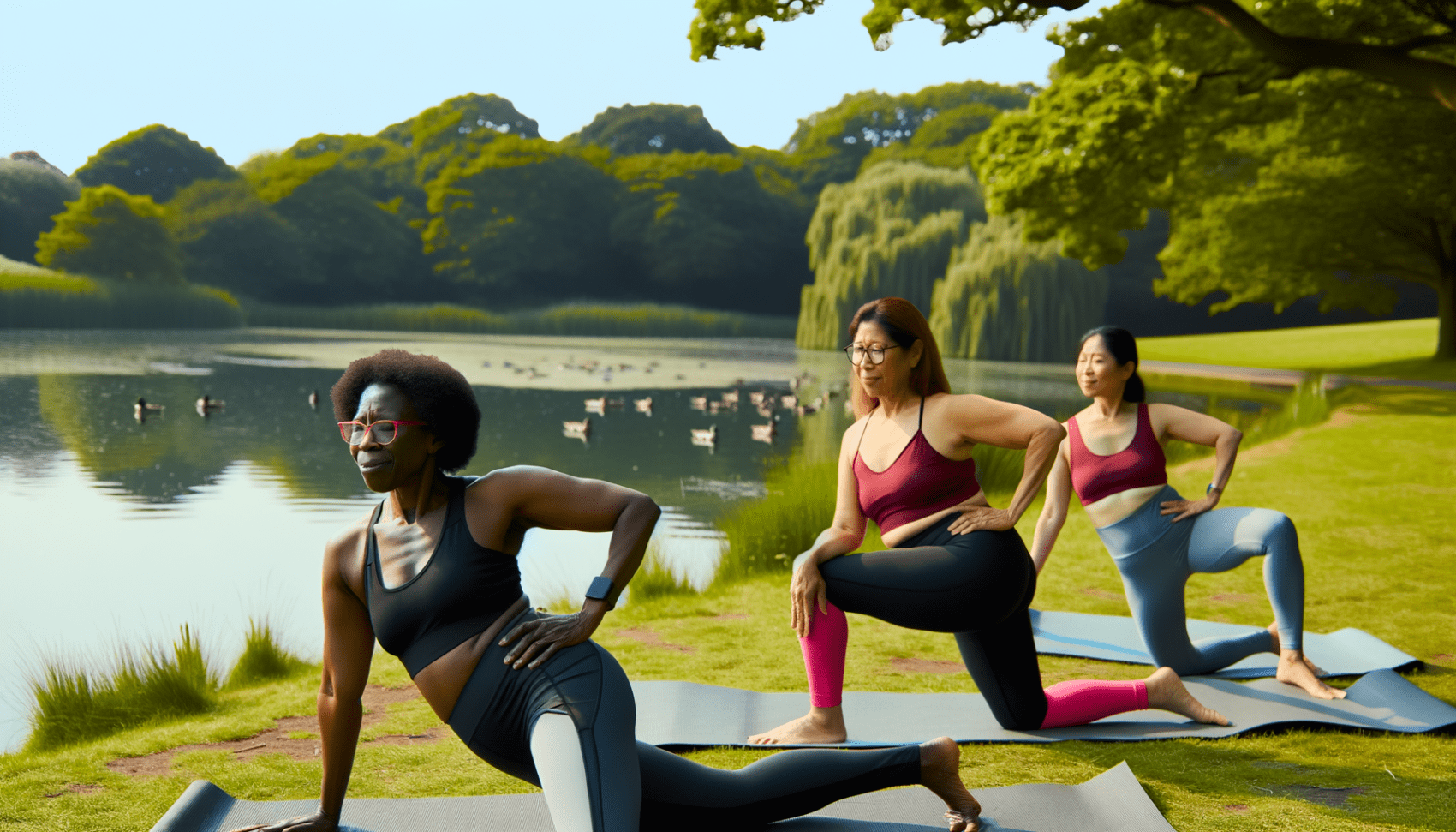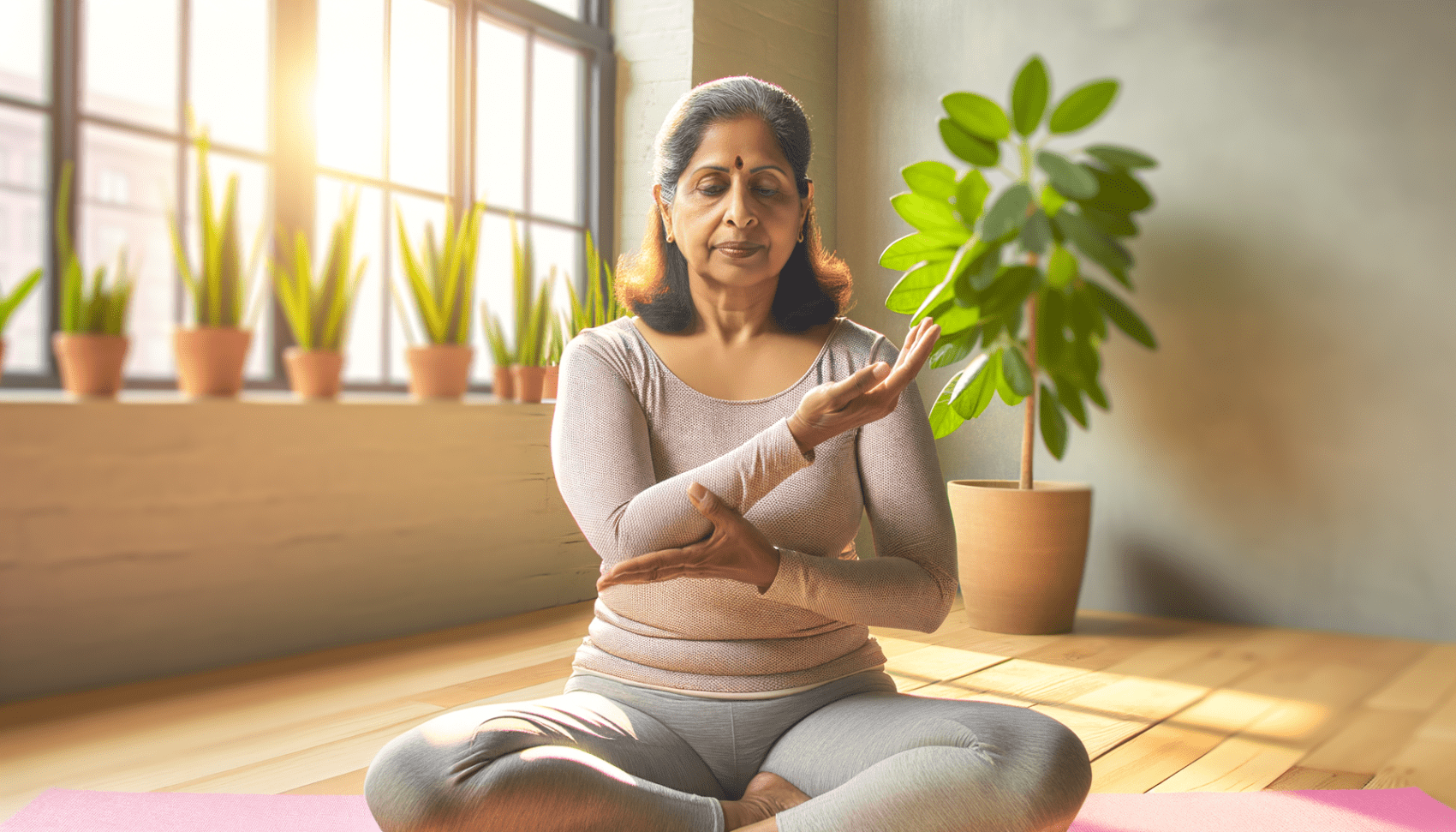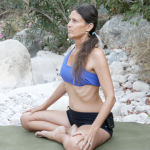The Concept of the Exercise Buffet
Imagine a table laden with a variety of colorful, enticing dishes, each offering a unique flavor and texture. This is the essence of the Menopause Exercise Buffet: a smorgasbord of physical activities designed to cater to every taste and need during a transformative time in a woman’s life. The buffet approach encourages exploration and experimentation with different types of exercises, allowing each individual to create a personalized and satisfying fitness platter.
Why Variety in Exercise Matters During Menopause
Menopause brings about significant changes in a woman’s body, including hormonal fluctuations that can affect mood, energy levels, and overall health. Variety in exercise becomes crucial as it helps to address the diverse challenges of menopause. From maintaining bone density and muscle mass to managing stress and weight, a mixed exercise regimen ensures that multiple health aspects are being supported. Moreover, variety keeps the mind engaged and the body challenged, preventing the plateau effect often seen with repetitive workouts.
The Importance of Enjoyment and Personal Preference
Exercise during menopause should not be a chore but a source of joy and empowerment. Enjoyment and personal preference play pivotal roles in sustaining an active lifestyle. When activities are pleasurable, they become something to look forward to rather than obligations to dread. This personal connection to exercise boosts adherence and fosters a positive relationship with one’s body during a time of change.
Challenges of Sticking to a Single Exercise Routine
Committing to a single exercise routine can be limiting and may lead to boredom, burnout, or even injury due to overuse of specific muscle groups. The menopause phase, with its ups and downs, calls for flexibility in fitness. Some days might call for the vigor of a dance class, while others might require the calming stretch of yoga. By embracing the buffet approach, women can adjust their exercise selection to match their daily needs and preferences, ensuring a sustainable and enjoyable fitness journey through menopause and beyond.
The Non-Negotiable: Resistance Training
Health Benefits of Resistance Training for Menopausal Women
Menopause brings about significant changes in a woman’s body, including decreased bone density and muscle mass, which can lead to osteoporosis and sarcopenia. Resistance training, however, stands as a powerful ally against these age-related challenges. Engaging in regular resistance exercises helps to maintain and build lean muscle mass, boost metabolism, and improve bone density. This form of exercise is also beneficial for weight management, as increased muscle mass naturally enhances caloric burn. Moreover, resistance training can improve joint health, reduce the risk of injury, and even alleviate some symptoms of menopause, such as mood swings and sleep disturbances, by promoting the release of endorphins, the body’s natural mood elevators.
Different Forms of Resistance Training
Resistance training can take many forms, making it accessible to women of all fitness levels and preferences. Options include:
- Free weights: Exercises using dumbbells, barbells, and kettlebells.
- Bodyweight exercises: Movements such as push-ups, squats, and lunges that use your own body weight for resistance.
- Resistance bands: Lightweight and portable, these bands provide resistance when stretched.
- Weight machines: Found at gyms, these machines are designed to target specific muscle groups.
- Suspension equipment: TRX bands, for example, leverage gravity and body weight to perform a variety of exercises.
Each of these methods can be modified to suit individual fitness levels and can be progressively adjusted as strength and endurance improve.
Incorporating Resistance Training into Your Routine
Integrating resistance training into your fitness regimen need not be daunting. Aim for at least two sessions per week, focusing on major muscle groups. A session can be as short as 20-30 minutes, with a combination of upper body, lower body, and core exercises. It’s important to start with weights or resistance levels that are manageable and to focus on proper form to prevent injury. As you progress, gradually increase the weight or resistance to continue challenging your muscles.
For those new to resistance training, consider seeking guidance from a fitness professional who can design a personalized program and demonstrate correct technique. Additionally, many find that participating in a group class or finding a workout partner can provide motivation and support.
Remember, the goal is to build a sustainable practice that fits into your life. Consistency is key to reaping the long-term benefits of resistance training. Celebrate each improvement, no matter how small, and recognize that each step forward contributes to a stronger, healthier you during menopause and beyond.
Mind-Body Connection: Yoga and Pilates
Yoga for Stress and Anxiety Relief
Menopause can be a time of significant change, often accompanied by increased stress and anxiety. Yoga, with its ancient roots and emphasis on deep breathing and mindfulness, offers a powerful tool for managing these symptoms. The practice of yoga encourages a focus on the present moment, which can help to alleviate worries about the future or regrets about the past. Asanas (yoga poses) combined with pranayama (breath control) work to calm the nervous system, reduce cortisol levels, and promote a sense of peace and well-being. Regular yoga practice has been shown to improve sleep quality, enhance mood, and create a general sense of relaxation, making it an invaluable component of the menopause exercise buffet.
Pilates for Core Strength and Flexibility
Another key ingredient in the menopause exercise buffet is Pilates, a system of exercises designed to improve physical strength, flexibility, and posture, with a particular focus on core strength. A strong core is essential during menopause, as it can help to alleviate back pain, improve balance, and maintain bone health. Pilates exercises are often performed on a mat or using specialized equipment like the Reformer. They are low-impact yet highly effective, making them suitable for women at various fitness levels. By enhancing muscle elasticity and joint mobility, Pilates can help menopausal women maintain their range of motion and reduce the risk of injury.
Combining Yoga and Pilates for Holistic Health
For a truly holistic approach to health during menopause, combining yoga and Pilates can be particularly beneficial. While yoga emphasizes flexibility and relaxation, Pilates focuses on strength and stability. Together, they offer a comprehensive workout that addresses the mind-body connection. This combination can help to manage menopausal symptoms such as weight gain, mood swings, and hot flashes. By engaging in both practices, women can enjoy a varied and balanced exercise regimen that not only supports physical health but also promotes mental clarity and emotional resilience. The integration of these two disciplines into a regular fitness routine can lead to improved overall health and a greater sense of harmony during the menopausal transition.
Cardiovascular Choices: Dance, Aerobics, and More
Dance Cardio as a Fun Mood Booster
Menopause can be a challenging time, but incorporating dance cardio into your exercise regimen can serve as a delightful mood booster. Dance is a dynamic way to engage the entire body, combining rhythmic movements with music to elevate the heart rate and release endorphins. These “feel-good” hormones are crucial for combating menopausal symptoms such as mood swings and depression. Whether it’s Zumba, salsa, or hip-hop, dance cardio offers a fun and social way to stay fit, ensuring that exercise feels less like a chore and more like a celebration of movement.
The Enduring Appeal of Aerobics
Aerobics has stood the test of time, remaining a popular choice for those seeking an effective cardiovascular workout. Its appeal lies in its versatility and adaptability. Aerobic exercises can range from high-impact routines to low-impact or step aerobics, catering to various fitness levels and joint sensitivities that may arise during menopause. The structured nature of an aerobics class can provide a sense of community and accountability, which is invaluable for maintaining motivation. Moreover, the combination of coordinated movements and music helps improve coordination and cognitive function, both of which can be affected by hormonal changes during menopause.
Jogging and Walking for Heart Health and Mental Clarity
For heart health and mental clarity, jogging and walking are excellent cardiovascular choices that can be easily tailored to individual needs and preferences. These weight-bearing activities strengthen the bones, which is particularly important to counteract the increased risk of osteoporosis associated with menopause. Additionally, the rhythmic nature of jogging and walking can be meditative, providing mental clarity and stress relief. These activities can be enjoyed outdoors, offering the added benefit of fresh air and vitamin D exposure. Whether it’s a brisk walk in the park or a light jog through the neighborhood, these activities are a staple in a menopausal woman’s fitness plan for their simplicity and profound health benefits.
By embracing a variety of cardiovascular exercises, menopausal women can enjoy a buffet of options that not only cater to their changing bodies but also to their spirits. The key is to find joy in movement, which will pave the way for a healthier, happier menopause journey.
Low-Impact Options: Swimming and Cycling
Swimming for Joint-Friendly Exercise
As we navigate the waves of menopause, finding an exercise that is gentle on the body yet effective can be a treasure. Swimming emerges as a shining pearl within the low-impact exercise category. The buoyancy of water supports the body, significantly reducing the strain on joints and muscles. This makes swimming an ideal workout for menopausal women who may be experiencing joint pain or stiffness.
Engaging in a swimming routine can help maintain or even improve cardiovascular health, muscle strength, and flexibility without the harsh impact of land-based activities. Moreover, the resistance provided by water can serve as a natural form of strength training, helping to preserve bone density—a crucial concern during menopause. Whether it’s freestyle, breaststroke, or a leisurely backstroke, swimming can be tailored to your comfort level and fitness goals.
Cycling for Cardiovascular Fitness and Leg Strength
Another excellent addition to the menopause exercise buffet is cycling. This low-impact exercise can be enjoyed outdoors, with the wind in your hair and the sun on your back, or indoors on a stationary bike. Cycling is particularly beneficial for building cardiovascular fitness, which is vital for heart health as we age. It also targets the lower body, helping to build strength and muscle tone in the legs without putting undue pressure on the knees and hips.
For those who prefer a group setting, indoor cycling classes offer a fun and motivating environment. The adjustable resistance on stationary bikes means you can customize the intensity of your workout, making it suitable for all fitness levels. Cycling can also be a wonderful way to explore the outdoors, whether on a leisurely ride through the park or a more challenging hill climb. It’s an exercise that can easily be integrated into daily life, such as cycling to the store or work, which adds a practical element to staying active.
Embracing low-impact exercises like swimming and cycling can contribute to a well-rounded fitness plan that is kind to your body during menopause. These activities not only cater to personal preferences and enjoyment but also offer substantial health benefits. By incorporating these exercises into your routine, you can help manage menopause symptoms, maintain a healthy weight, and enjoy a higher quality of life.

Embracing the Great Outdoors: Hiking and Nature Activities
The Psychological Benefits of Outdoor Exercise
Engaging in outdoor activities, especially during menopause, can have profound psychological benefits. The tranquility of nature acts as a natural antidote to stress and anxiety, which are common during this transitional phase. Exposure to green spaces has been linked to reduced levels of cortisol, the body’s stress hormone, and an increase in mood-enhancing chemicals like endorphins and serotonin. Moreover, the simple act of being in the sunlight can boost vitamin D levels, which is essential for maintaining a positive mood and overall well-being.
Hiking as a Versatile Fitness Activity
Hiking is a versatile exercise that caters to a wide range of fitness levels and can be easily tailored to your personal capabilities. Whether you choose a gentle trail or tackle more challenging terrain, hiking provides a cardiovascular workout while also strengthening the muscles in your legs, core, and even your arms if you use trekking poles. The varied landscape offers natural resistance and can help improve balance and coordination. Additionally, hiking allows for personal reflection and mental rejuvenation, as the rhythmic nature of walking is meditative, helping to clear the mind and encourage creative thinking.
Other Outdoor Activities to Explore
Beyond hiking, the great outdoors offers a buffet of activities to keep your fitness routine fresh and exciting. Here are a few to consider:
- Cycling: A fantastic way to explore longer distances without the impact on your joints.
- Swimming: Whether in a lake or the ocean, swimming is excellent for cardiovascular health and muscle strength.
- Kayaking or Canoeing: These activities provide an upper body workout and can be a peaceful way to enjoy the water.
- Rock Climbing: For those looking for a challenge, rock climbing builds strength, flexibility, and problem-solving skills.
- Gardening: A therapeutic way to stay active, gardening can improve dexterity and hand strength.
- Bird Watching: This leisurely pursuit encourages you to walk and observe, fostering a deep connection with nature.
Each of these activities can be enjoyed alone or with a group, and they all contribute to a holistic approach to health during menopause. By embracing the great outdoors, you not only enhance your physical fitness but also nourish your mental and emotional health. So, lace up your boots, grab a water bottle, and step into nature’s gym – your adventure awaits!
Creating Your Personal Menopause Fitness Plan
How to Mix and Match Exercises for a Balanced Routine
Designing a fitness plan during menopause is akin to assembling a well-rounded meal—it should be balanced and cater to your unique nutritional needs. Think of your exercise routine as a plate you’re filling with various types of movement: resistance training, cardiovascular workouts, flexibility exercises, and balance activities. Aim to include a mix of these elements throughout your week. For instance, you might schedule resistance training on Mondays and Thursdays, yoga on Tuesdays, a dance class on Wednesdays, and a weekend hike. This approach not only targets different muscle groups and systems in your body but also keeps your regimen exciting and diverse.
Listening to Your Body and Adjusting Accordingly
As your body navigates the changes of menopause, it’s crucial to tune into its signals. Some days you might feel energetic and capable of a high-intensity workout, while on others, a gentle yoga session may be more appropriate. Pay attention to how you feel during and after exercise, and be willing to adjust your plan. If you’re experiencing fatigue or soreness, it may be a sign to scale back or try a different activity. Remember, consistency is key, but flexibility is your ally in maintaining a sustainable fitness routine.
The Role of Community and Support in Fitness
Embarking on a fitness journey during menopause can be more enjoyable and successful with a support system. Joining a group class, finding a workout buddy, or participating in an online community can provide motivation, accountability, and social interaction. Sharing experiences and challenges with others who understand what you’re going through can be incredibly validating and empowering. Plus, it’s an excellent way to make new friends who share your commitment to health and wellness.
Celebrating Progress and Staying Motivated
Tracking your progress is not just about noting the pounds or inches lost; it’s also about acknowledging the increase in energy, the improvement in sleep quality, or the newfound strength you’ve developed. Celebrate these victories, no matter how small they may seem. Set short-term, achievable goals and reward yourself when you meet them—perhaps with a new workout outfit or a relaxing massage. Staying motivated through menopause can be challenging, but by recognizing your hard work and celebrating your achievements, you’ll reinforce the positive aspects of your fitness journey.













